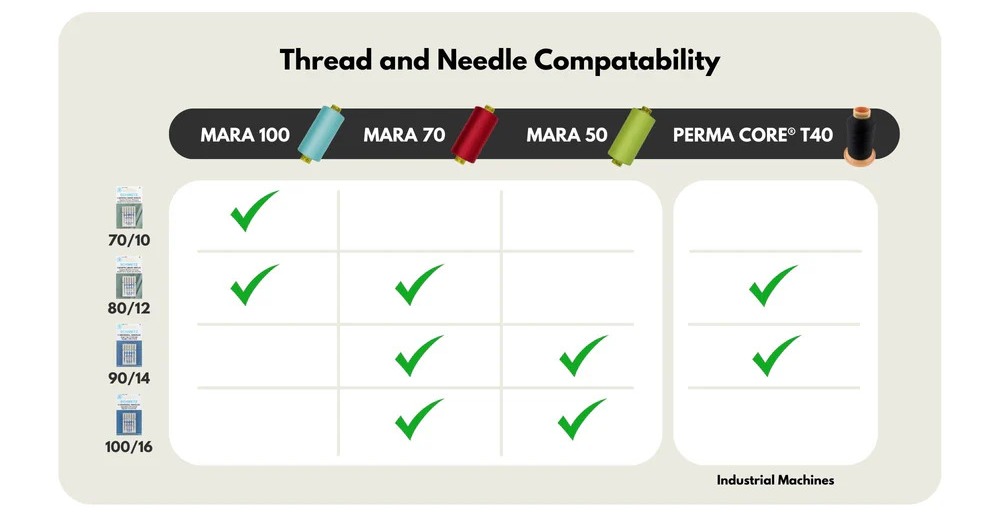
Is everything going wrong? Try a new needle. I was getting endless birds nests on a project in January of 2025 and a new needle fixed everything.
I have yet to find a different sort of needle that won't fit into the "chuck" on any of my machines, so selecting a needle is a matter of picking a size and point style. Just for the record though, a designation of 130/705 H is the sort of needle you use for a home sewing machine. Some makers (like Schmetz) will indicate this on their packaging.
Once you watch the Superior thread "needle therapy" video, you will be convinced to select "topstitch" as the style for all of your work.
Sharp needles are the right thing for woven fabrics like the stuff used in outdoor gear. Ball point are useful for loose knits where the needle can push between the threads. Microtex is just a fancy name for "sharp".
Universal is (surprisingly) said to be the least favorite needle. It is said to offer the worst of both sharp and ball point and the best of neither.
A leather needle has a chisel like point rather than the usual conical shape, and will produce a rather large and unforgiving hole in fabric.
The unanimous recommendation of Hammock Forums is to use a sharp (or Microtex), in particular for Gutermann Mara 70 a Schmetz Microtex 70/10 works just fine.
The numbers like 10, 11, or 12 are the American size system, and a bigger number is a bigger needle. The numbers like 70, 80, 90 are the European size system, and again a bigger number is a bigger needle. You often see both systems indicated by a designation like 80/12.
The European system is sometimes indicated by "Nm" and is the diameter of the needle at a non-reinforced point in unit of hundredths of a millimeter. In other words a 100 needle is 1mm in diameter, and a 70 needle is 0.7mm in diameter.
Needles only last for 6 to 8 hours of sewing time. Given that needles are fairly inexpensive, you may want to start each project with a new needle. If you count hours, go with every 8 hours, otherwise change for every project. However, if you use Ti-coated needles, you can sew for 8 times longer (60+ hours). In that case, you will begin to hear a clunking noise as the needle goes dull and that is your clue to replace the needle.
A general rule is to use a needle whose eye is 40% larger than the diameter of the thread. I have been told to pick the thread for the project, then the needle for the thread. The crucial thing is that the thread lays in the groove in the needle.
The Superior thread info page gives the following guidelines:
50 weight thread (Tex 20) -- use a 75/11 or 80/12 needle 40 weight thread (Tex 25) -- use a 90/14 needleI use mostly Tex 30 or 40 thread, so I should be using a 12 or 14 needles. I might be able to use a 10 needle with my Tex 30 "Mara 100 Sew-all" thread. At this time, I have only 10, 12, and 14 needles on hand.
Mara; Tex; Needle 220; 13; 120; 25; 100; 30; "10-12" (sew-all) 70; 40; "14-16" 30; 100; TERA; TEX; Needle 80; 35; "10-14" 60; 50; "14-16" 40; 75; "16-18" 30; 100; 20; 150; 15; 200; 10; 290; 8; 375;

And take note of the above! This little graphic was posted in an email from RSBRT on 11-18-2024 along with this link:
I enjoy their recommendation of "use what you got". The idea being that whatever is on your machine right now will probably work just fine.Their overall recommendation is Mara 70 with an 80/12 sharp needle.
Tom's home page / [email protected]